
Monday, April 25, 2016
Traveling to Tune Town
I'm once again planning another culinary road trip, this time headed to do some intensive research on the iconic foods of Nashville. Stay tuned (no pun intended) for my report when I return!


Friday, April 22, 2016
The Royal Herb
Basil was known as the royal herb by the Greeks. A member of the mint family, the fragrant herb's flavor is described as a cross between licorice and cloves. The most common type of this herb is sweet basil and is the most popular and widely grown in the United States. It's used in many Mediterranean dishes.
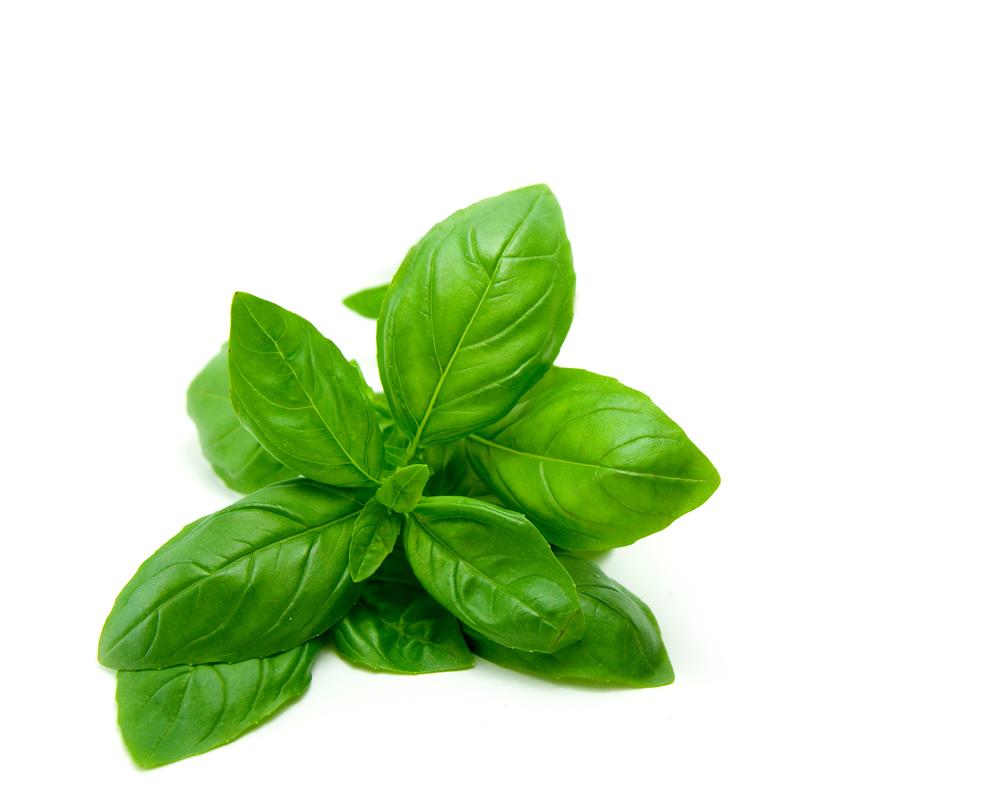
Another different type of basil is the Thai or Asian variety. It has small, pointed, purple tinted green leaves and has a more pungent, licorice-like taste. It is used extensively in Southeast Asian cooking.
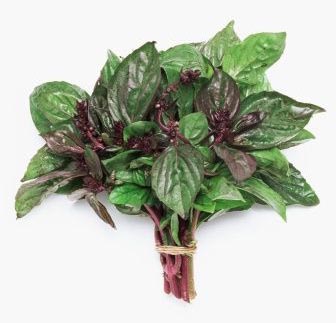
To compare each try growing both in your herb garden this season. Then experiment with them in the cuisine of both cultures!

Another different type of basil is the Thai or Asian variety. It has small, pointed, purple tinted green leaves and has a more pungent, licorice-like taste. It is used extensively in Southeast Asian cooking.

To compare each try growing both in your herb garden this season. Then experiment with them in the cuisine of both cultures!
Thursday, April 21, 2016
'Tis the Season
It's time to pull the cover off the grill and fire it up for some wonderful meals. Now that the temperature is once again comfortable for cooking outside we can begin to plan meals that tempt the taste buds like nothing prepared on the kitchen stove can do.

In the most recent issue of Cuisine at home Greg Vose from Truckee, CA wrote in to ask "What's the difference between grilling and barbecuing?" Here is the reply:
"While the terms are often used interchangeably, there's actually quite a difference between these two cooking terms, especially to barbecue purists. In a nutshell, the difference comes down to temperature and time.
"Grilling involves cooking, usually small cuts of meat, such as steaks and pieces of chicken, directly over high heat for a short period of time. It's a perfect cooking method for fish or vegetables, more tender cuts of meat, with little connective tissue, and when you want a quick sear.

"Barbecuing, on the other hand, is all about low and slow. It typically involves using bigger cuts of meat, like slabs of ribs or whole chickens, and slow roasting them over low or indirect heat for an extended period of time, often hours, sometimes with added smoke or a mopped-on sauce. Barbecuing is also often used for tough cuts and large roasts (like beef brisket or pork shoulder) that require longer heat exposure to break down the tough connective tissue to make the meat tender."
Now you know.
Wednesday, April 20, 2016
For Your Pet
I read with interest and a fair amount of incredulity a recent article in the Food News section of the May issue of Food Network Magazine. It was titled Pet Project and said that a company is now manufacturing condiments for pets.

Already on the market are items that include dog-friendly Muttstard, Petchup, Mutt-n-aise and Bark B-Q and soon to hit the shelves are condiments for cats as well. Meownaise, Catchup and Meowstard like the other sauces, are full of vitamins that pet diets sometimes lack. If you wish to perk up your pet's diet you can purchase a 12 ounce bottle of any of the above for $6 at Amazon.com.

Already on the market are items that include dog-friendly Muttstard, Petchup, Mutt-n-aise and Bark B-Q and soon to hit the shelves are condiments for cats as well. Meownaise, Catchup and Meowstard like the other sauces, are full of vitamins that pet diets sometimes lack. If you wish to perk up your pet's diet you can purchase a 12 ounce bottle of any of the above for $6 at Amazon.com.
Tuesday, April 19, 2016
A Healthy Alternative
Ever get that irresistible craving for french fries? That happens to me on a daily basis. But the carb load is formidable, making the McDonald's "all you can eat" offer for fries a dangerous proposition.
So I was encouraged to find a healthy alternative. Recently I came across a recipe for asparagus fries at a website named Damn Delicious. Here it is:
So I was encouraged to find a healthy alternative. Recently I came across a recipe for asparagus fries at a website named Damn Delicious. Here it is:
ASPARAGUS FRIES
Ingredients
1 pound asparagus, trimmed
1/2 cup flour
2 eggs, lightly beaten
3/4 cup panko breadcrumbs
1/4 cup grated Parmesan
Kosher salt & freshly ground black pepper to taste
Directions
Preheat oven to 425 degrees.
Dredge the asparagus in the flour, then dip each spear in the beaten egg. Coat in the mixture of breadcrumbs, Parmesan, salt & pepper and transfer to a wire rack set on a baking sheet.
Bake until golden brown, 7-13 minutes.
Serve immediately.


Monday, April 18, 2016
Home Opener
One sure sign of Spring is the start of a new season of professional baseball. I was present at the Phillies Home Opener at Citizens Bank Park down at the sports complex in South Philadelphia. It was a very festive occasion highlighted by a block party next to the stadium complete with a ferris wheel, a band on stage and lots of freebies.
Hatfield Quality Meats is a proud supplier of all the hot dogs served in the ballpark and was in attendance at the pre-game activities. Handing out free samples in front of their van was 4th generation family member Steve "Rabbit" Clemens who greeted me warmly. We have known each other for longer than his 37 years with the company.
HQM has always been a class act, a supportive force in the community and I was impressed with their promotional van. I also enjoyed their sense of humor with the lettering on the door of their vehicle:
Too bad the Phillies lost.
Friday, April 15, 2016
Last Call
The health benefits of asparagus go beyond providing vitamins and nutrients. A recent study found that consuming it may help alleviate hangovers. Researchers think that this could be due to certain amino acids and minerals in asparagus that protect liver cells from toxins.
So if you're going to imbibe in excess tonight make sure that you include some asparagus in your diet. It's good steamed, boiled, or fresh!
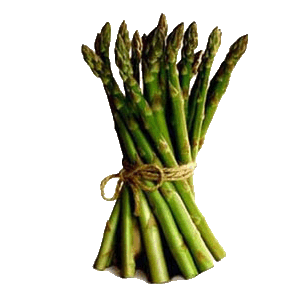
So if you're going to imbibe in excess tonight make sure that you include some asparagus in your diet. It's good steamed, boiled, or fresh!

Thursday, April 14, 2016
Tuscan Herbs
For the chef there is nothing better than stepping out from the kitchen into a garden of fresh herbs. At the Flower & Garden Festival at EPCOT a Tuscan Cucina Garden was on display to highlight some of Italy's "go-to" culinary greenery.
Here is a brief description of some of the herbs found in a Tuscan garden:
BASIL-It is Italy's best known fresh herb and has a strong anise flavor. It's a natural with freshly sliced tomatoes on in a rich tomato sauce.
MINT-There are literally hundreds of different kinds of min ranging from mild & sweet to spicy and hot. And there are almost as many ways to use it.
OREGANO-This herb has a potent aroma with a flavor that predominates when used in cooking. Oregano shouts Italy!
PARSLEY-Perhaps the most prevalent herb grown in the Tuscan garden, it is used in concert with garlic and onions simmered in olive oil to form a flavor base. The flat leaf variety is stronger than the curly leaf.
SAGE-Pungent and musty, it is used primarily in butter sauces and enhances pork and chicken dishes.
THYME-diminutive in size but packing a powerful punch it adds a lemony flavor to soups and sauces.
ROSEMARY-With a strong resinous aroma and flavor it should be employed sparingly. And the tough needles should be added at the beginning of the cooking process so they can soften. Great with potatoes, chicken and lamb.
Here is a brief description of some of the herbs found in a Tuscan garden:
BASIL-It is Italy's best known fresh herb and has a strong anise flavor. It's a natural with freshly sliced tomatoes on in a rich tomato sauce.
MINT-There are literally hundreds of different kinds of min ranging from mild & sweet to spicy and hot. And there are almost as many ways to use it.
OREGANO-This herb has a potent aroma with a flavor that predominates when used in cooking. Oregano shouts Italy!
PARSLEY-Perhaps the most prevalent herb grown in the Tuscan garden, it is used in concert with garlic and onions simmered in olive oil to form a flavor base. The flat leaf variety is stronger than the curly leaf.
SAGE-Pungent and musty, it is used primarily in butter sauces and enhances pork and chicken dishes.
THYME-diminutive in size but packing a powerful punch it adds a lemony flavor to soups and sauces.
ROSEMARY-With a strong resinous aroma and flavor it should be employed sparingly. And the tough needles should be added at the beginning of the cooking process so they can soften. Great with potatoes, chicken and lamb.
Wednesday, April 13, 2016
From Garden to Medicine Cabinet
The Flower & Garden Festival at EPCOT also contained a Health & Healing Garden. For thousands of years science and medicine have relied on certain plants to provide health and healing for people around the globe.
Katherine Butler authored an article for the website Mother Nature Network entitled "10 Healing Plants You Can Find in Your Garden." I've listed below some of her findings:
Dandelions-Yes! A common weed in everyone's lawn has multiple benefits. It's used as a diuretic and at the same time supplies potassium that can be lost due to dehydration. Topically it's used to treat eczema. The leaves, when ingested, regulate blood sugar while the blossoms ease the pain of arthritis.
Rosemary-Associated with "remembrance" rosemary improves circulation to the brain. It contains carnosic acid that has been studied as a way to reduce the risk of Alzheimer's Disease. The oil in the bloom also has antibacterial and anti-fungal properties.
Aloe Vera-The clear gel in the leaves is used to treat burns, cuts and skin infections and is also an aid known to reduce constipation. It also alleviates heartburn and IBS.
Sunflower-A tea made from the leaves is a beneficial astringent, diuretic, expectorant and an agent to reduce fever. A sip can also treat all sorts of coughs and colds.
Peppermint-It calms the stomach and aids in digestion, soothes headaches, reduces skin irritations, nausea, pain, diarrhea and flatulence.
Catnip-It's not just for felines! Chewing on the leaves can ease the pain of toothaches. Causing you to perspire, it lowers fever. It is a mild sedative and the oil it produces repels insects.
Sweet Basil-The Greeks used it to treat scorpion stings and the Romans found it useful to counteract poisonings. Externally it is an effective insect repellent and taken internally it treats stress, diabetes and asthma.
Katherine Butler authored an article for the website Mother Nature Network entitled "10 Healing Plants You Can Find in Your Garden." I've listed below some of her findings:
Dandelions-Yes! A common weed in everyone's lawn has multiple benefits. It's used as a diuretic and at the same time supplies potassium that can be lost due to dehydration. Topically it's used to treat eczema. The leaves, when ingested, regulate blood sugar while the blossoms ease the pain of arthritis.
Rosemary-Associated with "remembrance" rosemary improves circulation to the brain. It contains carnosic acid that has been studied as a way to reduce the risk of Alzheimer's Disease. The oil in the bloom also has antibacterial and anti-fungal properties.
Aloe Vera-The clear gel in the leaves is used to treat burns, cuts and skin infections and is also an aid known to reduce constipation. It also alleviates heartburn and IBS.
Sunflower-A tea made from the leaves is a beneficial astringent, diuretic, expectorant and an agent to reduce fever. A sip can also treat all sorts of coughs and colds.
Peppermint-It calms the stomach and aids in digestion, soothes headaches, reduces skin irritations, nausea, pain, diarrhea and flatulence.
Catnip-It's not just for felines! Chewing on the leaves can ease the pain of toothaches. Causing you to perspire, it lowers fever. It is a mild sedative and the oil it produces repels insects.
Sweet Basil-The Greeks used it to treat scorpion stings and the Romans found it useful to counteract poisonings. Externally it is an effective insect repellent and taken internally it treats stress, diabetes and asthma.
Tuesday, April 12, 2016
From Garden to Plate
Perhaps when we think of edible plants our mind quickly goes to things like certain herbs. Mint, chives, oregano and dill are grown in most every backyard garden and used to accent home cooked meals. But have you ever considered including Bachelor's Button petals to a pasta dish? Or perhaps garnishing a salad with the golden blossoms of a marigold? In addition to adding a touch of color they can provide a peppery, spicy note.
Melissa Breyer writing in the website Treehugger says that the culinary use of flowers has been in existence for thousands of years, adding color, flavor and fragrance to foods, from the Italian use of squash blossoms to the addition of rose petals in meals prepared on the Indian sub-continent.
Here are some edible plants that you should consider including the next time you take to the kitchen to prepare a meal:
Allium blossoms-all members of the onion family. Every part of the plants are edible.
Carnation petals-provide a sweet taste sensation, just like their sweet fragrance.
Chrysanthemum-like their colors, their taste has a wide range from peppery to pungent.
Fuchsia-bright and tangy.
Hibiscus-a vibrant cranberry tart flavor.
Johnny Jump-up-used in salads they add a subtle mint flavor.
Lavender-Like their scent, their taste is sweet, spicy and perfumed.
Nasturtium-a sweet floral flavor bursting with a spicy, peppery finish.
Rose-a strongly perfumed flavor.
Who knew? Our gardens are a delight to the eye and the palate!
Monday, April 11, 2016
Truck Farm
As I was researching the topic of urban agriculture I came across an interesting project. Ian Cheney and Curtis Ellis won a Peabody Award for their documentary King Corn in 2007 about the industrialization of the North American food system. Moving from Boston to Iowa they wanted to learn where their food came from by growing a acre of corn. And in so doing they shattered the Norman Rockwell image of the family farm.
Returning to the east coast they decided upon another project. They filled up the back of their '86 Dodge Ram with soil and began planting a 1/1000 acre farm in the spring of 2009. Driving their mobile community farm from neighborhood to neighborhood they gave urban kids an opportunity to get their hands dirty and to see how food actually grows. The project also gave an entirely new meaning to the term "truck farm." In 2011 that moniker became the title of their efforts in a 48 minute documentary film that took a whimsical and honest look at urban agriculture.
Returning to the east coast they decided upon another project. They filled up the back of their '86 Dodge Ram with soil and began planting a 1/1000 acre farm in the spring of 2009. Driving their mobile community farm from neighborhood to neighborhood they gave urban kids an opportunity to get their hands dirty and to see how food actually grows. The project also gave an entirely new meaning to the term "truck farm." In 2011 that moniker became the title of their efforts in a 48 minute documentary film that took a whimsical and honest look at urban agriculture.
To view their documentary click on Truck Farm.
Friday, April 8, 2016
Soothingly low-tech
One display at EPCOT's Flower & Garden Festival was devoted to urban gardening. It demonstrated how small areas can be turned into productive green spaces that enliven their surroundings with color, fragrance and flavor. There was even a dining table sprouting plants and herbs on the top and an aquarium of swimming fish below.
Urban gardening is thriving these days, "on rooftops, repurposed warehouses, climbing up walls, blooming on apartment terraces and sunbathing on fire escapes," writes George Ball, chairman of W. Atlee Burpee & Company. He goes on to describe them as "soothingly low-tech." And that's good for a person such as me.
There are many benefits to growing your own urban, small space garden. It adds greenery and increases shading. It also puts food on your table. But more importantly it helps us reconnect with the earth, gaining a greater appreciation for where our food comes from. In addition to the culinary factor "patio gardens provide peaceful places for relaxation and contemplation," so says Brian Clark Howard writing for National Geographic.

They can even be a magnet that attracts business. Take for example the very popular and lush High Line Park in the Chelsea District of New York City.

It's not too soon for you to consider your own green space and plan for an urban garden! The rewards will soothe both body and soul.
Thursday, April 7, 2016
Post Cruising
After leaving the cruise ship in Miami harbor it was only a short drive up to Orlando. And who could think of being in that town without a visit to Mickey's Place? And as luck would have it EPCOT was hosting one of their many special events, the International Flower and Garden Festival.
All the wonders of Disney were on display, including of course, food venues highlighting the festival. For the next few days I will be posting stories of my stay at "The Happiest Place on Earth."
All the wonders of Disney were on display, including of course, food venues highlighting the festival. For the next few days I will be posting stories of my stay at "The Happiest Place on Earth."
Wednesday, April 6, 2016
Dinner with the Boss
Previously I mentioned my disappointment with a special meal on board the cruise ship. That memory was erased quickly when I reserved a place at The Chef's Table later that week. It was a very exclusive dinner hosted by Executive Chef Panda Nirada at a table set for just 8 of us.
That evening we were welcomed by the man who was responsible for a staff of over a hundred and who made sure that the three thousand or so passengers had enough to eat (and more!) each and every day. He also provided all the meals for over a thousand crew members. Panda greeted us in the ship's lobby and from there took us on an amazing tour of the galley. Along the way we sampled appetizers like Salmon Tartar Cornets with Sesame Seeds, and Beef Carpaccio on Air Pillow with Chocolate Bacon and Apple Ribbons.
As he spoke we learned that his upbeat and carefree demeanor belied a difficult upbringing on the streets of one of India's most crowded cities. He spoke sparingly of his past, instead focusing on his gratitude for the kindness of others that propelled him out of squalor and into a successful career as a chef.
From the galley we made our way into a private dining room and proceeded to be amazed as course after course of excellently prepared food was presented before us. Ingredients from land, sea and air were artfully arranged, almost too elegant to touch with a fork. But we did! We dined on one course after another: Beet Blanket with Spiced Grape Tea, Crab Stack with Corn Custard & Passion Caviar, Duck Textures with Creamy Quinoa & Parmesan Churros in a Port Wine Jus, Sea Bass with a Chorizo Crust & Fried Pop Corn Pudding & Lobster Foam, and Wagyu presented on a Bone Marrow Souffle with a Scallion & Garlic Panisse.
And the Grand Finale was an amazing assortment of pastry creations: Sea Salt Praline Chocolate, Raspberry Mojito, Key Lime Cake, Apricot Vanilla Gel, and Citrus Cream.
It was truly a night to savor!
That evening we were welcomed by the man who was responsible for a staff of over a hundred and who made sure that the three thousand or so passengers had enough to eat (and more!) each and every day. He also provided all the meals for over a thousand crew members. Panda greeted us in the ship's lobby and from there took us on an amazing tour of the galley. Along the way we sampled appetizers like Salmon Tartar Cornets with Sesame Seeds, and Beef Carpaccio on Air Pillow with Chocolate Bacon and Apple Ribbons.
As he spoke we learned that his upbeat and carefree demeanor belied a difficult upbringing on the streets of one of India's most crowded cities. He spoke sparingly of his past, instead focusing on his gratitude for the kindness of others that propelled him out of squalor and into a successful career as a chef.
From the galley we made our way into a private dining room and proceeded to be amazed as course after course of excellently prepared food was presented before us. Ingredients from land, sea and air were artfully arranged, almost too elegant to touch with a fork. But we did! We dined on one course after another: Beet Blanket with Spiced Grape Tea, Crab Stack with Corn Custard & Passion Caviar, Duck Textures with Creamy Quinoa & Parmesan Churros in a Port Wine Jus, Sea Bass with a Chorizo Crust & Fried Pop Corn Pudding & Lobster Foam, and Wagyu presented on a Bone Marrow Souffle with a Scallion & Garlic Panisse.
And the Grand Finale was an amazing assortment of pastry creations: Sea Salt Praline Chocolate, Raspberry Mojito, Key Lime Cake, Apricot Vanilla Gel, and Citrus Cream.
Tuesday, April 5, 2016
Chicago with Style
At Hot Dog University students are instructed as to correctly prepare a "Chicago Style" hot dog.

First, you must begin with a natural casing, all beef, hot dog. It can be cooked in any of three different methods: simmered (not boiled) in hot water, steamed, or grilled (although the grilled ones are more properly referred to as "char dogs").
Then the hot dog is placed on a steamed poppy seed bun.
Condiments are added next. It is important that they are placed on the hot dog itself, not the roll. It begins with yellow mustard and neon green pickle relish. Then as the expression goes, it is "dragged through the garden" as chopped raw onion, 2 half slices of tomato, pickled sport peppers, and a kosher dill pickle spear are all added. Celery salt is optional.
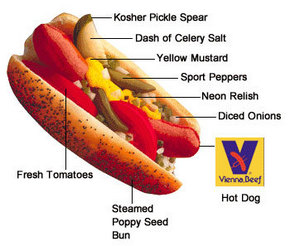
And it is anathema to even consider using ketchup! I guess that's a Philly thing...
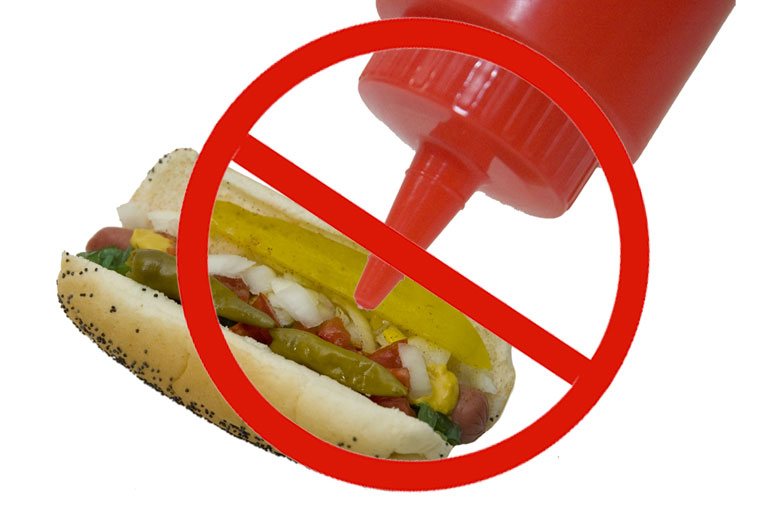

First, you must begin with a natural casing, all beef, hot dog. It can be cooked in any of three different methods: simmered (not boiled) in hot water, steamed, or grilled (although the grilled ones are more properly referred to as "char dogs").
Then the hot dog is placed on a steamed poppy seed bun.
Condiments are added next. It is important that they are placed on the hot dog itself, not the roll. It begins with yellow mustard and neon green pickle relish. Then as the expression goes, it is "dragged through the garden" as chopped raw onion, 2 half slices of tomato, pickled sport peppers, and a kosher dill pickle spear are all added. Celery salt is optional.

And it is anathema to even consider using ketchup! I guess that's a Philly thing...

Monday, April 4, 2016
HDU
The results are in from Martinsville. Kyle Busch in his Toyota won the opening event in the 2016 NASCAR Sprint Cup Series. What is not known is exactly how many Martinsville Hot Dogs were consumed during the weekend.
And I'm also wondering just how many of those vendors have learned their craft from Hot Dog University. Yes, it's true there is such an institution of higher learning sponsored by the Vienna Sausage Manufacturing Company, based in Chicago. The two day course is taught by Mark Reitman who proudly proclaims, "We are the nation's college of encased meat knowledge."

With a combination of classroom instruction and hands-on cart experience Prof. Reitman instructs students how to successfully launch a career in the mobile food service business. Hot Dogs 101 includes information about business practice, product knowledge, permits and licensing, set-up and break down. A HDU manual is also distributed, containing important information and worksheets. And of course there is behind the cart training with real food and live customers. That's when the theoretical becomes practical. It's quite literally The Art of the Cart.

The registration fee to attend HDU is $699. Graduates are awarded, in addition to a diploma, $350 in rebate coupons and an additional $350 in marketing materials and signage from the sausage company.

And I'm also wondering just how many of those vendors have learned their craft from Hot Dog University. Yes, it's true there is such an institution of higher learning sponsored by the Vienna Sausage Manufacturing Company, based in Chicago. The two day course is taught by Mark Reitman who proudly proclaims, "We are the nation's college of encased meat knowledge."

With a combination of classroom instruction and hands-on cart experience Prof. Reitman instructs students how to successfully launch a career in the mobile food service business. Hot Dogs 101 includes information about business practice, product knowledge, permits and licensing, set-up and break down. A HDU manual is also distributed, containing important information and worksheets. And of course there is behind the cart training with real food and live customers. That's when the theoretical becomes practical. It's quite literally The Art of the Cart.

The registration fee to attend HDU is $699. Graduates are awarded, in addition to a diploma, $350 in rebate coupons and an additional $350 in marketing materials and signage from the sausage company.

Subscribe to:
Posts (Atom)
















